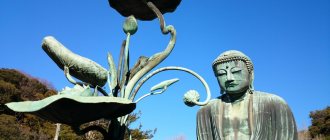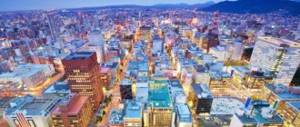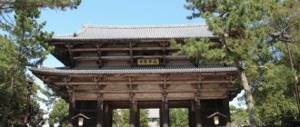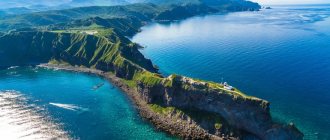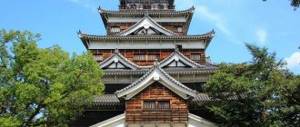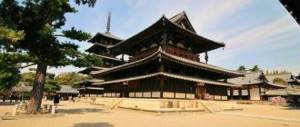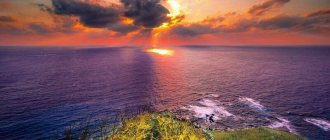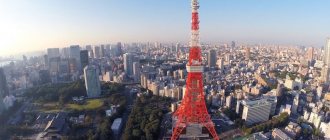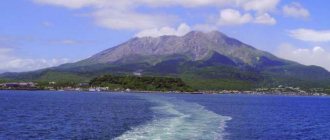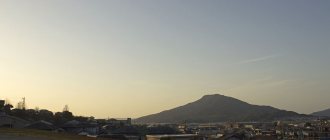Nagoya Castle
Nagoya Castle is located in Nagoya City, Aichi Prefecture.
It would have been founded as a residence in 1612 for Yoshinao Tokugawa, the son of Ieyasu Tokugawa. It was burned during the war, but reconstructed in 1959. The castle structure consists of chain towers with five layers of large and small towers. The castle is famous for its green roof and golden satihoko (mythological fish), and is also a symbol of the city of Nagoya. The Castle, Nagoya's main attraction The tallest tower extends seven floors upward, with an observation room on the seventh floor. On the third and fifth floors there is an exhibition of life-size satihoko models. Visitors can also experience what it is like to live inside and outside the castle, use stone tools and move around on kagos (large baskets). Here you can simultaneously admire the views of the castle and learn the history of the city. On the ground floor are painted images on sliding paper doors and other artifacts such as swords and military equipment.
History of the origin of the city
In the 17th century, there were a large number of small settlements on the territory of the city. In 1610, during the reign of the Tokugawa warlord, construction began on the magnificent Nagoya Castle. Over time, new buildings began to appear around the castle. There were more and more of them. As a result, a whole city grew up, which was named after the castle.
The city continued to grow and in 1889, it became a major industrial, commercial and entertainment center.
Currently, the light, chemical, textile and oil refining industries are thriving in the city. As well as metallurgy and mechanical engineering.
Tokugawa Garden
Tokugawa Garden is a Japanese-style garden located in Nagoya, Aichi Prefecture, Higashi District. Originally the mansion of the Owari Tokugawa family, there are still ruins of a samurai residence at the main gate. Adjacent to the garden is the Tokugawa Art Museum, which displays scrolls of The Tale of Genji, as well as the Hosabunko Nagoya-shi Library, which houses manuscripts of The Tale of Genji.
At the center of the garden is a pond that symbolically represents the natural landscape of Japan, a simplified version of a waterfall flowing into the ocean. The gardens of the Daimyo of the Edo period (1603-1868) were also created primarily in this style.
Tokugawa Gardens has a rich landscape, and here you can feel the grandeur of the Daimyo's gardens. Tourists can enjoy various terrains, including forests and rocks. Here you can admire the four seasons - peonies bloom in April, irises from early to late June, and yellowing leaves appear at the end of November. This is a great place to relax after an exciting tour of Nagoya.
Geography
Nagoya is located in the central part of the island of Honshu, on the Mino Plain in Owari Province. The south of the city is washed by the waters of Ise Bay. Nagoya's area is 326.45 km².
Nagoya has two large rivers flowing towards the south: the Shonai from the north and the Tempaku from the east. Both flow into Ise Bay. Also through the city center, from north to south, flow the waters of the Horikawa Canal, dug at the beginning of the 17th century, during the construction of Nagoya Castle.
The relief of Nagoya is conventionally divided into three zones: the eastern hills, the central plateau and the alluvial plains of the north, west and south.
The eastern zone includes the urban areas of Moriyama, Chikusa, Meita, Tempaku and Midori. Its highest point is Mount Togokusan (198.3 m), located in the northeast. This area is characterized by hills 50–100 m above sea level, which are connected to the Mikawa Mountains. In this area, in the 5th-13th centuries, high-quality clay formed by the weathering of Mount Sanaga was mined and first-class Japanese ceramics were made. Since the 20th century, the eastern districts of the city have been transformed into housing and educational areas.
The central zone consists of the urban areas of Naka, Higashi, Showa and Mizuho, as well as parts of the Minami and Atsuta areas. The height of the plateau on which it is located is 10−15 m above sea level and gradually decreases from north to south. This plateau is divided into smaller plateaus - Nagoya, Atsuta and Mizuho - thanks to the valleys formed by the Yamazaki, Shojin and other rivers that flow through its territory. There are also small valleys formed by erosion of the plateau itself. This area has been inhabited since the Paleolithic, and in the 4th-8th centuries its southern side faced the Ayutthaya Lagoon, which is mentioned in the anthology of ancient Japanese poetry "Man'yoshu". Until the 18th century, there were ports in the southern Atsuta region, but subsequently the coastal areas were reclaimed and the plateau lost access to the sea. Since the 20th century, the central zone has been used for residential and commercial areas.
The area of north, west and south Nagoya includes the urban areas of Kita, Nishi, Nakamura, Nakagawa and Minato as well as parts of the Minami and Atsuta areas. These areas were formed due to the accumulation of alluvium in river valleys and their mouths. The lowest point of this zone is 1.73 m below sea level. The coastline of the southern and western regions has been shaped by climate change, lowering sea levels and reclamation efforts. Although the zone suffers severe damage from typhoons and floods, it is suitable for irrigation and rice cultivation. Therefore, in ancient and medieval times, there were estates here with the names Adziki-se (“the estate of cheap food”) and Tomita-se (“the estate of rich fields”). Since the 2nd half of the 20th century, this zone has been used for residential areas and industrial enterprises. The city port is located here.
Nagoya's climate is considered moderate, but in summer the average humidity is over 70%, making the city muggy, and in winter strong cold winds blow from the northwest, making the prefectural center one of the coldest places in the region. In 2006, the average air temperature was recorded at 15.9 °C, the highest was 37.5 °C, and the lowest was −3.7 °C.
Nagoya is located on the path of typhoons passing through the Japanese archipelago. However, their frequency has decreased since the 1980s. The most destructive typhoon swept through the city on September 26, 1959, killing 1,851 people.
Kakuo-zan Nittai-ji Temple
Kakuo-zan Nittai-ji Temple is located in the Chikusa region. It is the only Buddhist temple in all of Japan that is not associated with any sect of Japanese Buddhism; All 19 sects in Japan use a rotation system in which each sect's high priest serves at the temple for three years.
The temple was founded in 1904 to bury and preserve a stupa that was donated by Thailand (this stupa contains the actual thumb bone of Shakyamuni Buddha).
The tower in which this stupa is kept is made of stone and is an unusual building that combines elements of both Indian and Buddhist architecture.
Nittai-ji Temple is intended to symbolize good relations between the two countries. On its territory there is an image of Rama V, who donated the stupa, as well as a chamber in which you can see the legacy of Thai kings. Every October 23rd, on the anniversary of the founding of the temple, it is tradition that the Thai Ambassador travels to Japan to visit the temple.
Meito Museum of Art
This is a private museum located in Aichi Prefecture, Nagakute. It was originally located in Nagoya, but in 1992 it was moved here and reopened as a Japanese-style art museum with a garden.
The museum has a large collection of contemporary Japanese paintings by various artists, including the "3 Great Japanese Artists of Beauty": Shoen Uemura, Kiyokata Kaburagi and Shinsui Ito.
The museum exhibits famous paintings by various artists from the Meiji period (1868-1912) to the Heisei period (1989-present). Among them are Gyokudo Kawai and Taikan Yokoyama. By studying the paintings, you can see how artistic styles have changed over the centuries, and also learn about the history of Japanese paintings.
Toyota Automobile Museum
The Toyota Automotive Museum was built in 1989 as part of the 50th anniversary of the Toyota Motor Cooperation. Celebrating more than 100 years of gasoline-powered automobile history, the permanent exhibition includes not only Toyota vehicles, but also historic vehicles from around the world from the 19th and 20th centuries from a variety of manufacturers.
The museum is divided into the "main building" and the "new building". The main building hosts exhibitions on the origins of the automobile, the development of automotive technology, and the history of automobile culture. The new building highlights the history of Japanese cars and also hosts exhibitions of the company's products.
Night in Nagoya
In Nagoya you can spend the night in different places, in very different price ranges. You can spend the night in youth hostels, hotels or campsites. Hotel prices can vary greatly, but in high season you can expect over €50 per night. Hostels, youth hostels and camping sites are a bit cheaper but also offer far less luxury.
Views: 2,520
Share link:
- Tweet
- Share posts on Tumblr
- Telegram
- More
- by email
- Seal
Shirotori Teien Garden
Shirotori Teien Garden is an authentic Japanese garden located in Atsuku Shirotori Prefectural Park in Nagoya.
This is a walking pond with a path. Among all the public parks in the Tokaj region, this is the largest. The garden is inspired by the landforms of the Chubu region and pays special attention to the 3 Tokai Prefectures (Aichi, Gifu and Mie), recreating their natural grandeur. In the western part there is a hill in the shape of Mount Ontake, and the river flowing into each pond is made in the likeness of the Kiso River. The central pond and adjacent ponds are modeled after Ise Bay.
The "Seiyu-tei" in the main establishment is a full-scale tea house designed in the authentic Sukiya style. It often hosts tea parties and other events. There is another tea house where you can drink matcha tea while admiring the garden.
Leisure
Nagoya is a big city that will delight any active tourist. Here you can have a wonderful holiday with your family, together with your children, and the city will not leave single adult residents indifferent.
As a rule, vacationing families with small children prefer the city aquarium “Port of Nagoya Public Aquarium”. A spacious aquarium will delight not only children, but also adults. There are two large killer whales and dolphins here. Which you can look at, sitting on the steps and watch the living inhabitants of the underwater world, as if on a cinema screen.
In addition, on the territory of the aquarium there is a large cinema hall where documentaries about animals are shown.
In addition, the city has a zoo with many exotic inhabitants.
The skyscrapers of Nagoya are home to large shopping centers - an ideal place for lovers of shopping and good food, because the world's largest clothing brands and companies, as well as large restaurants, are located here. What can we say about observation platforms on the roofs of high-rise buildings!
Nagoya is a tourism paradise! There are a great variety of hotels, inns and hostels for every budget!
This concludes my story about the beautiful city of Nagoya! I hope you find this information useful, tell us about your travels in Japan, subscribe to my blog and recommend it to your friends. Goodbye!
Lika Raido
Jakko-in Temple
Founded in 654, it is the oldest temple in Owari Province. It is well known as a place of power that even Oda Nobunaga visited. The sanctuary is known for its blooming flowers in the spring, green maple leaves in the summer, beautiful colors in the fall, and a languid “aura” in the winter. The leaves are especially beautiful in autumn. So much so that the temple is called "Momiji-in" or "autumn leaf temple." There are about 1000 maples growing around the main hall and every year in autumn they delight the eye with a variety of colors.
Due to the rich natural environment and nature trails that run through the sanctuary's land, it has been designated a national park.
General information
Nagoya is the 4th most populous city in Japan after Tokyo, Yokohama and Osaka. Because of its intermediate position between the ancient Japanese capital of Kyoto in the west and the modern capital of Tokyo in the east, it is sometimes called Chukyo (中京 chūkyō, "middle capital").
Nagoya is an important commercial and industrial center of the country and the Chubu region, where important transport routes of Western and Eastern Japan intersect.
Since the 17th century, the city served as the center of the historical province of Owari and was the main residence of a side branch of the Tokugawa samurai clan, relatives of the Japanese shoguns.
JR-Maglev and Railway Park (SCMAGLEV and Railway Park)
JR-Maglev and Railway Park is a railway-themed museum founded in March 2011 in Nagoya, Aichi Prefecture. JR Tokai, the company that operates the Tokaido Shinkansen, also operates the museum.
At the train exhibition, visitors can see the first Shinkansen of the zero type, the 100, 300 and 700 series. Here you can also see the yellow Shinkansen 922, which is called the “Yellow Doctor”. It is used for railway inspection, so people usually cannot see it from the inside. The 932 series train is the new Yellow Doctor, very popular among visitors due to its rarity.
Also on display here is the JR-Maglev experimental car for the JR-Maglev Shinkansen Central Line, scheduled for production in 2027.
In addition, you can see Hoji 6005, the last steam locomotive in Japan, as well as many other old model trains.
Atsuta-jingu Shrine
Atsuta-jingu Shrine, located in the woods of southern Nagoya City, has long been called Atsuta-san. Including tourists in recent years, 6.5 million people visit this place annually.
One of the three sacred treasures mentioned in Japanese mythology, passed from emperor to emperor - Kusanagi no Tsurugi (Kusanagi sword) is buried here. The other two treasures are the mirror and the ball. This shrine became the imperial shrine after the Ise Shrine, which was revered by courtiers and military leaders since ancient times.
In 113 the sword was buried. This year the temple was founded. In 2013, it celebrated its 1900th anniversary.
Guide: Kobe Attractions
Getting off in Nagoya
A popular place for walking in Nagoya is Sakae. In the surrounding area you will find many shops, cafes and restaurants. Retail facilities are located not only above ground, but also underground. Those who don't like crowds should head to the East End. The East End is considered a quiet entertainment area with plenty of shopping. However, Japan's third city will never be completely quiet. Businessmen from Nagoya usually stay in Fushimi. The real nightlife of the city is also found here. So, if you still want to relax to the fullest, then you should be here at night.
